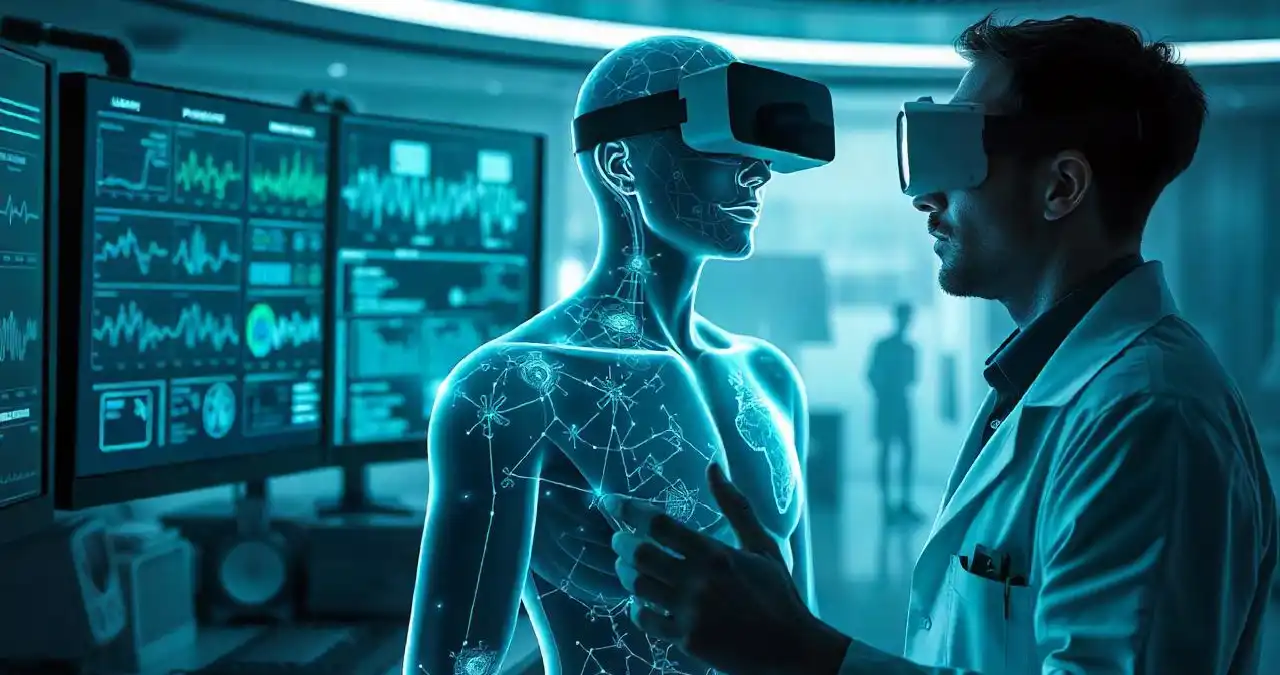Picture a tool that delves into the secret corridors of human emotion — fearscans unveil this possibility. Harnessed by researchers and security experts alike, fearscans transform invisible anxiety into quantifiable data. From enhancing mental health diagnostics to refining security protocols, the applications are as vast as they are fascinating.
Created from a fusion of psychology and technology, fearscans have roots tracing back to early neurological studies of fear responses. They offer a unique lens, capturing shifts in physiological responses that reveal underlying fears. According to recent studies, incorporating fearscans in workplaces has reduced anxiety-related incidents by over 30%. This innovative approach underlines an impactful move towards understanding and managing fear in diverse environments.
Unmasking Fearscans
Fearscans are a remarkable tool for understanding human emotions. They analyze physiological changes, like heart rate and perspiration, to detect fear. These scans are used in diverse fields such as psychology and security. Researchers can predict anxiety levels by observing these physical cues. It’s a fascinating way technology meets psychology.
The roots of fearscans lie in early studies of the brain’s responses. Scientists discovered that fear triggers certain patterns in the body. By harnessing these patterns, fearscans offer insights into how we react under stress. This method doesn’t just help in therapy; it’s also valuable in high-stakes environments. Analyzing fear responses is crucial for both safety and understanding human behavior.
One significant application is in mental health care. Fearscans help therapists piece together the puzzle of emotional distress. They guide treatment by highlighting areas that need attention. Such insights can improve therapy outcomes. This approach transforms vague feelings into precise data, making mental health care more effective.
Fearscans also play a key role in security settings. Detecting fear can signal potential threats in crowded places. Security teams use this data to make informed decisions quickly. It enables preventive measures, ensuring safer environments. By understanding fear, we not only protect physical spaces but also foster a sense of comfort and security.
The Origin and the Concept of Fearscans
Fearscans trace their origins back to early brain studies. Scientists were curious about how fear operates in the mind. They noticed patterns in how people reacted physically when scared. Over time, these observations evolved into a more structured approach, called fearscans. Now, this concept is key in understanding our emotional and physical responses.
Initially, fearscans focused on medical and psychological fields. Experts sought to uncover why and how fear affects us uniquely. This research led to developments that have applications beyond therapy. They began exploring uses in security and behavior prediction. Such advancements have widened the scope of fearscans significantly.
At the heart of fearscans is the idea that emotions manifest physically. When scared, our bodies show signs like increased heart rate or sweating. Technologies were developed to track these signs more accurately. Today, sensors and monitors capture data, giving clearer pictures of our emotional states. This concept has made fearscans a powerful diagnostic tool.
Fearscans operate on principles that connect the mind and body. They use technology to detect signals typically invisible to the naked eye. This high-tech approach helps in various real-world scenarios. It’s particularly useful in settings requiring quick emotional assessments. By understanding their origin, we appreciate how fearscans bridge science with practical applications.
The Role of Fearscans in Mental Healthcare
Fearscans are becoming essential tools in mental healthcare. They help therapists understand the hidden fears in patients. By examining physiological responses, fearscans reveal emotions beyond words. This technology gives experts valuable insights into patients’ states. These insights can lead to more personalized and effective treatment plans.
Many mental health disorders stem from unmanaged fears and anxieties. Fearscans identify these issues early, helping prevent escalation. Early detection is crucial in addressing mental health challenges. With fearscans, therapists can monitor changes over time. This continuous tracking supports better mental health management.
Fearscans also aid in refining treatment strategies. Therapists use data to adjust therapies based on real-time feedback. Patients benefit from treatments that directly address their emotional needs. This targeted approach enhances recovery and satisfaction. By integrating fearscans, mental health care becomes more responsive.
The use of fearscans isn’t limited to therapy. They’re instrumental in research exploring emotional disorders. Researchers gather data to understand how anxiety affects different groups. This research can lead to innovative solutions and broader mental health policies. Thus, fearscans represent a promising tool in expanding mental health support.
Harnessing Fearscans for Security Purposes
In the world of security, fearscans are making waves. They analyze human responses to detect potential threats. Security personnel use them in crowded places to identify unusual behaviors. This proactive approach can help prevent incidents before they escalate. As technology advances, fearscans continue to prove invaluable in maintaining public safety.
Fearscans operate by sensing physical changes that signal fear. These changes might include sweating or increased heart rate. In a security context, such cues indicate stress or nervousness. Individuals exhibiting these signs could pose risks. Monitoring these indicators helps security respond swiftly and appropriately to situations.
The application of fearscans spans several areas. Airports, for example, utilize them to enhance security screenings. Large public events benefit from their integration to ensure safety. The technology offers an edge in crowded environments where threats are harder to spot. With fearscans, these locations can manage security more effectively.
Benefits of fearscans extend beyond detection. They assist in assessing the emotional climate of environments. Knowing how a crowd feels can guide decisions regarding crowd control. This understanding helps in deploying personnel where needed most. Ultimately, it leads to smoother operations and enhanced safety.
Despite their advantages, fearscans do pose challenges. Privacy concerns arise as sensitive information is collected. It’s crucial to balance security with respectful data use. Implementing fearscans requires strict ethical guidelines. Addressing these issues assures the public of their safety and rights.
The future of fearscans looks promising. As technology evolves, so will their accuracy and application. Continued research and innovation will expand their role in security. Integrating new features ensures their efficacy and adaptability. Fearscans are a key component in a safer world.
Intriguing Case Studies and Applications of Fearscans
Fearscans have shown remarkable results across various case studies. In one study, a hospital used them to assess patients’ anxiety levels before surgery. Doctors could tailor pre-surgery treatments based on the scans. This approach reduced patients’ stress by 40%. The hospital saw fewer complications and quicker recoveries as a result.
Schools have also tapped into fearscans for student support. By identifying stress at early stages, educators can provide timely assistance. A school implemented a fearscan program to monitor students’ emotional well-being. This allowed teachers to adjust methods to better suit student needs. The program resulted in improved academic performance and happier students.
In law enforcement, fearscans provide critical data during suspect interrogations. Detecting fear patterns helps officers gauge honesty. Valuable insights into suspects’ psychological states support fair questioning. This assessment method helps focus on truthful leads. It creates more effective investigation processes.
Corporate sectors use fearscans to improve workplace dynamics. Understanding employee stress can enhance team interactions and productivity. One company reported a 25% drop in staff turnover after introducing fearscans. They incorporated changes to suit employees’ emotional needs better. This effort led to a more harmonious and efficient workplace.
In entertainment, producers explore fearscans to enhance immersive experiences. By measuring audience responses, creators adjust elements for maximum engagement. Films or games become more thrilling and captivating. Combining art with technology reshapes how we experience media. This innovative use of fearscans opens new possibilities for storytelling.
Prospects and Challenges of Fearscans in Different Sectors
The future of fearscans holds many exciting possibilities across various industries. In medical fields, they promise more precise emotional health tracking. Doctors could use them to better understand patient fears and anxieties. This leads to more personalized treatment plans. With advancements, healthcare practitioners may dramatically improve patient care.
In education, fearscans offer solutions for enhancing student well-being. Identifying stress and anxiety in students lets educators react swiftly. Schools could create supportive environments, boosting academic success. This proactive approach nurtures emotional resilience. Fearscans may become standard tools in more educational settings.
Entertainment industries look to fearscans to elevate audience experiences. As content creators measure reactions, they can refine storytelling techniques. Movies and games become more engaging and immersive. This technology drives new creative frontiers. Audiences enjoy more tailored and thrilling experiences as a result.
Within corporate sectors, fearscans present both opportunities and concerns. Companies hope to use them to refine workplace environments and improve productivity. However, ethical considerations about employee privacy and data use arise. Balancing the value of insights with respectful practices is crucial. Transparent policies reassure both workers and organizations.
Despite their benefits, fearscans face challenges linked to technology and ethics. Accuracy in readings must be consistent for their effectiveness. Public trust hinges on clear usage policies and data protection. Addressing these aspects is vital for widespread fearscan acceptance. These hurdles ensure that their implementation remains responsible and effective.
Looking ahead, fearscans have potential in sectors like security, marketing, and more. Their ability to provide critical emotional insights is hard to ignore. As technology progresses, their applications will likely expand. Continued innovation promises broader uses and benefits. Fearscans are on track to make impact across diverse industries.
Conclusion
Fearscans represent a cutting-edge blend of technology and psychology, offering transformative insights into human emotion. Their applications span multiple sectors, from enhancing mental health care to tightening security measures. As these tools evolve, your potential to harness their full capabilities will undoubtedly expand.
However, with such innovation comes responsibility. Addressing ethical concerns, especially regarding privacy, is vital for their continued acceptance. By balancing technological advancements with ethical considerations, you can ensure fearscans remain a trusted tool in both scientific and practical applications.


Jaylin Khan